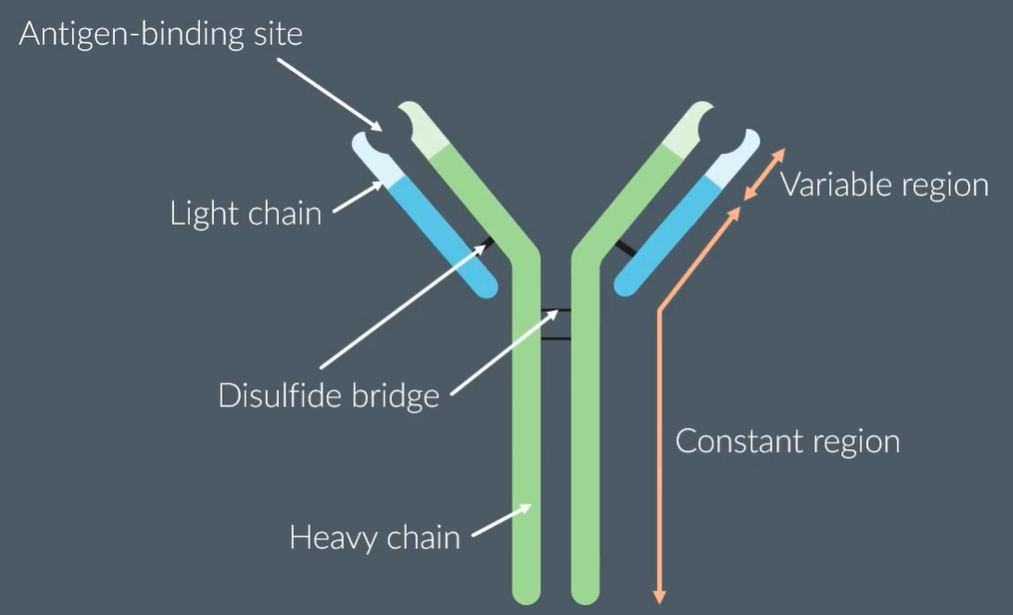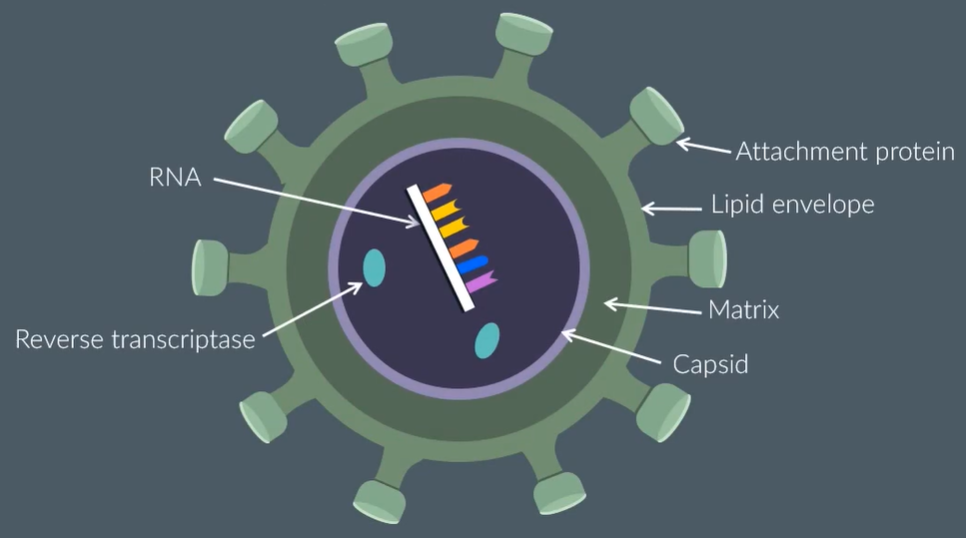Section 2 5 cell recognition and the immune system
1/16
Earn XP
Description and Tags
Used Uplearn, compared to textbook for this section
Name | Mastery | Learn | Test | Matching | Spaced |
|---|
No study sessions yet.
17 Terms
What are Lymphocytes?
Form part of the specific immune response (involved in humoral and cell-mediated response)
They identify: pathogens, toxins, cells from other humans and abnormal cells.
They identify the non-self cells based on their antigen
Each Lymphocyte has complementary receptors that bind to the antigen
What are antigens?
Proteins in the cell-surface membrane that trigger an immune response.
What are Phagocytes?
Form part of the non-specific immune response
They destroy pathogens via Phagocytosis
The steps of Phagocytosis
The phagocyte is attracted to the chemicals released by pathogen, and moves along a concentration gradient.
Receptors on the phagocyte binds to the pathogen
Phagocyte engulfs the pathogen, to form a phagosome
Lysosomes in the phagocyte fuse with the phagosome
Lysozymes are released which hydrolyses the pathogen
The phagocyte engulfs the soluble products of the pathogen and expels the rest.
The steps for Humoral immune response system
Primary response:
When naive B cell’s receptor binds to the pathogen, it forms an antigen presenting cell.
The antigen presenting B cell binds to a complementary helper T cell
Stimulating the B cell to clone itself
Where each clone differentiates into a plasma cell or a memory B cell
The plasma cells release antibodies
Secondary response: Quicker, greater conc of antibody
When memory B cell encounters the pathogen again, it will clone again to more plasma cells and more memory B cells more quickly
The differences between B cells and T cells:
B cells mature in the bone marrow, T cells mature in the thymus
B cells are involved in the humoral response, T cells are involved in cell-mediated response
What are antibodies and structure:
Proteins produced by naive B cells in response to the presence of a specific antigen
The shape of the antigen-binding site is as a result of antibodies tertiary structure.

What are monoclonal antibodies?
Antibodies with the same tertiary structure produced from cloned B cells
What is Agglutination?
An antigen and antibody bind to form an antigen-antibody complex.
Many monoclonal antibodies bind to the pathogens, which makes it easier for phagocyte to engulf.
The steps for Cell-mediated response:
Phagocyte binds to the antigen on the pathogen and engulfs it to form a phagosome, lysosomes bind with the phagosome releasing lysozymes to hydrolyse and becomes an antigen presenting cell. (on the cell membrane)
Naive helper T cells bind to antigen presenting cells
Stimulating the helper T cell to clone
Which helps B cells to clone in the humoral response
Some help with cytotoxic T cells and phagocytosis
Cytotoxic T cells bind to virus infected cells, and releases protein perferin (causes holes in the cell membrane) and leads to the cell’s death
Types of immunity: passive, active (natural and artificial)
Passive immunity: Introduction of antibodies from outside source, no memory B cells formed (e.g. antibodies passed from mother, anti-venom), short term as antibody will get broken down
Active immunity: production of antibodies by individual’s own immune system, long term as antibody will be formed as a response.
Natural active immunity: Results from individual becoming infected with disease naturally.
Artificial active immunity: When an immune response is formed, but without suffering from symptoms of the disease.
Herd immunity
When large amount of population are vaccinated, making it difficult for pathogen to spread within that population.
The structure of HIV
Attachment proteins bind to the receptors of host cell
Capsid stores the genetic material
Protective phospholipid layer, called lipid envelope
Lipid envelope and capsid are connected by matrix
Contains RNA strands and reverse transcriptase enzyme (important for HIV replication)

How HIV replicates?
Attachment protein on HIV binds to the helper T cell.
HIV protein capsid fuses with the helper T cells’ membrane
Allowing viral RNA and enzymes to enter cells
Reverse transcriptase converts RNA to DNA
Viral DNA enters the nucleus and integrated into the hosts’ DNA
Viral mRNA is formed (transcription)
mRNA translated to form viral proteins
Viral proteins are assembled to form a new HIV
How HIV effects immune system, and causes AIDS?
HIV replication occurs from helper T cells, which are destroyed
Helper T cells can not help clone B cells
So, no memory cells are formed or Plasma cells
So, no antibodies
Also, no Cytotoxic T cells to destroy virus infected cells
The ELISA test
HIV complementary antibody is fixed to the bottom of the reaction vessel
The target antigen forms a complementary antibody-antigen complex
The vessel is washed for any unwanted pathogens
Then a complementary antibody to the pathogen is added with an enzyme linked
The vessel is washed for any unbound antibody
The complementary substrate is added, if colour change then HIV (+). Else HIV (-)
Why antibiotics cannot be used on viruses, but on bacteria?
Antibiotics disrupt cell wall synthesis and interfere with their metabolism
But Viruses do not have a cell wall, and don’t have same metabolism pathways (rely on host cells)